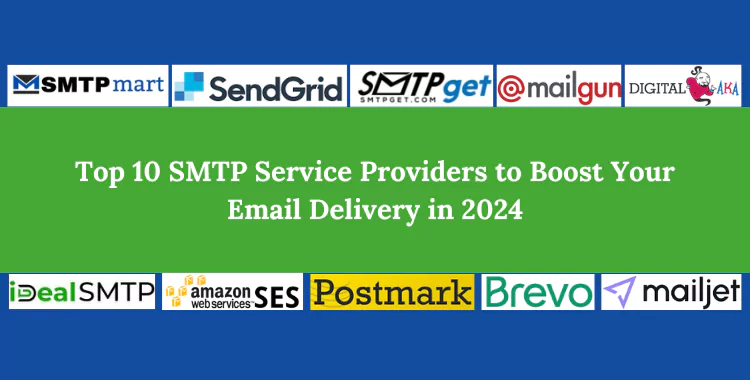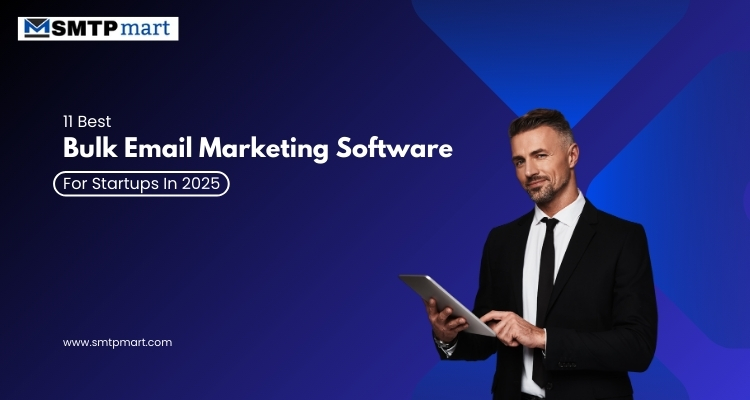Hyper-personalization is changing the way businesses connect with customers. People expect brands to understand their needs. Generic marketing is no longer enough. Companies must use Hyper-Personalization to create unique experiences for each customer. This helps businesses stand out, increase engagement, boost sales, and build customer loyalty. In this blog, we will explain everything about Hyper-Personalization, how to use it in marketing, its benefits, and how it can help businesses grow.
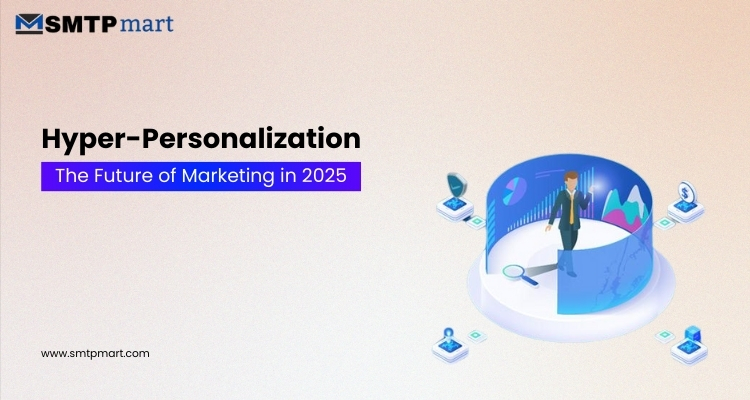
This blog will explore everything you need to know about Hyper-Personalization, its implementation in hyper-personalized marketing, the benefits of hyper-personalization, and how businesses can use hyper-personalization marketing to achieve remarkable growth.
What is Hyper-Personalization?
Hyper-Personalization is a smart marketing approach that helps businesses understand and connect with customers in a deeper, more meaningful way. It goes beyond basic personalization and creates unique experiences for each person. Here’s how it works in simple terms:
- Uses Advanced Technology – It relies on Artificial Intelligence (AI), real-time data, and predictive analytics to understand customer behavior.
- Goes Beyond Basic Details – Instead of just using a customer’s name or past purchases, it looks at browsing habits, location, interests, and real-time actions.
- Feels Like a Personal Shopkeeper – Imagine a store where the owner knows your favorite products and suggests exactly what you need. Hyper-personalization does this but on a digital level.
- Creates Meaningful Experiences – It helps businesses send the right messages, recommend perfect products, and improve customer interactions.
- Builds Strong Relationships – When customers feel understood and valued, they trust the brand more, leading to higher sales and long-term loyalty.
Pricing-
| Pricing | Cheapest plan | Premium Plan | Cluster Plan |
| SMTP Server Services | $97 / month | $153/ month | $342/ month |
| Bulk Email Services | $25 / month | $150/ month | $350/ month |
The Role of Hyper-Personalized Marketing in Modern Businesses
Hyper-Personalized Marketing vs. Traditional Marketing
Traditional marketing focuses on large groups of people. It puts customers into broad categories based on age, location, or interests. Businesses then send the same messages to everyone in that group. This approach often feels impersonal, and many customers ignore such messages.
Hyper-Personalized Marketing, on the other hand, takes things to the next level. It uses smart technology like AI and data analysis to study customer behavior in real-time. This helps businesses understand what each person wants and deliver messages that truly speak to them. Let’s look at some key differences:
- Audience Targeting: Traditional marketing divides people into groups, while Hyper-Personalization treats every customer as an individual.
- Communication: Traditional marketing sends general messages, but Hyper-Personalization creates personal, one-on-one interactions.
- Data Usage: Traditional marketing uses basic data, but Hyper-Personalization analyzes real-time behavior to offer better experiences.
- Engagement: With generic marketing, many people lose interest. Hyper-personalized marketing increases engagement because it makes people feel valued.
By making customers feel special and understood, businesses can build trust, loyalty, and stronger relationships—which ultimately leads to growth.
Benefits of Hyper-Personalization
Let’s look at some key benefits of Hyper-Personalization and how it makes a real difference.
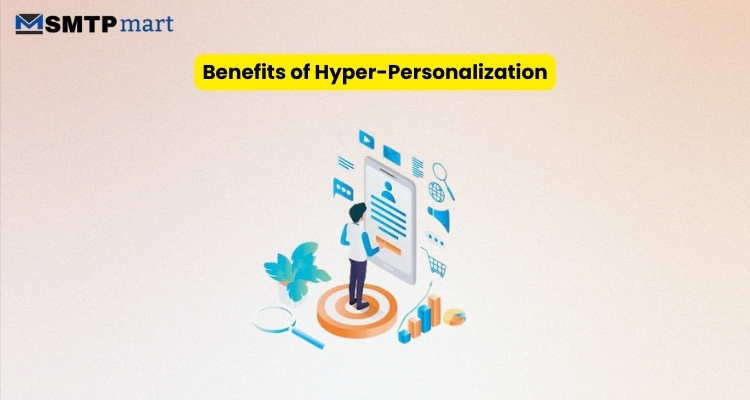
1. Better Customer Experience
People love it when brands understand them. Imagine visiting an online store and seeing product suggestions that match exactly what you were looking for. Or receiving a special discount on your favorite items. These small things make customers feel valued and appreciated. When a brand offers personalized experiences, customers feel like they are being treated as individuals, not just another sale.
2. More Engagement
People are more likely to read and respond to messages that feel relevant to them. If a company sends random emails or ads, most customers will ignore them. But if they receive recommendations for things they like, they will pay attention. For example, if you love running and get an email about the latest running shoes, you are more likely to check it out. This leads to more clicks, more interactions, and more sales. Many businesses use email automation to send the right message to the right person at the right time, increasing engagement.
3. Stronger Customer Loyalty
When customers see that a brand truly understands them, they stay loyal. They keep coming back because they trust that the brand will continue to offer them the best products, services, and deals. Think about your favorite coffee shop remember your usual order—it feels special, right? Hyper-personalization builds that same connection in the digital world.
4. Better Marketing Results
Marketing can be expensive, but Hyper-Personalization ensures businesses spend their money wisely. Instead of sending ads to people who may not be interested, companies can focus on the right audience at the right time. This means fewer wasted efforts and more sales.
5. Staying Ahead of the Competition
Businesses that use Hyper-Personalization have an advantage. They create smarter, data-driven experiences that make customers happy. This sets them apart from competitors who still use a one-size-fits-all approach.
Implementing Hyper-Personalization in Your Business
Hyper-personalization helps businesses connect with customers in a more personal way. To do this well, companies need to focus on three important things:
1. Collecting and Using Customer Data
The first step in Hyper-Personalization is understanding your customers. Businesses need to collect useful information about their audience, such as what they like, what they buy, and how they interact with a brand. This can be done through:
- CRM platforms – These tools help businesses store customer information and track interactions.
- Website analytics – Businesses can see which pages customers visit and what interests them.
- AI-driven behavior tracking – Artificial Intelligence (AI) can study customer habits to predict what they might want next.
- Social media insights – Customers share a lot about their preferences on social media, which can help businesses personalize their approach.
2. Using AI and Machine Learning
AI and machine learning play a big role in Hyper-Personalization. They help businesses predict what customers will like based on past actions. For example, if a customer often buys sportswear, AI can recommend new products in that category. This makes shopping easier and more enjoyable for customers.
3. Real-Time Personalization
People expect brands to respond quickly to their needs. By using real-time data, businesses can create instant and relevant experiences, such as:
- Personalized email marketing campaigns – Email service providers allow businesses to send tailored messages to customers based on their interests.
- AI-powered chatbots – These chatbots give instant, customized responses and product suggestions.
- Dynamic website content – Websites can change what they show based on what a visitor is looking for.
Examples of Hyper-Personalization in Action
Here are some real-life examples of Hyper-Personalization in action:
1. Amazon’s Personalized Recommendations
Amazon is a great example of Hyper-Personalization. When you visit Amazon, you see product recommendations based on what you have searched for, what you bought before, and what similar customers like. This makes shopping easier because Amazon helps you find what you need without searching too much. The more you shop, the better the recommendations become.
2. Netflix’s Content Curation
Netflix uses smart technology to suggest movies and shows you will enjoy. It looks at what you watched before, how much time you spent watching, and what types of content you prefer. Have you ever noticed how Netflix even changes the thumbnails of shows to match your interests? This is all part of Hyper-Personalization. It makes watching Netflix more fun because you always find something interesting to watch.
3. Starbucks’ Customized Offers
Starbucks uses its mobile app to create special offers just for you. If you always buy a caramel latte, Starbucks may send you a discount on that drink. If you like trying new things, the app may suggest a new seasonal drink you might enjoy. It also gives rewards based on your past purchases, making you feel valued as a customer.
Even email campaigns use Hyper-Personalization. Instead of sending the same email to everyone, companies now send emails with personalized product suggestions, discounts, and messages that match each customer’s interests.
Overcoming Challenges in Hyper-Personalization Marketing
Let’s explore these challenges and how to overcome them.
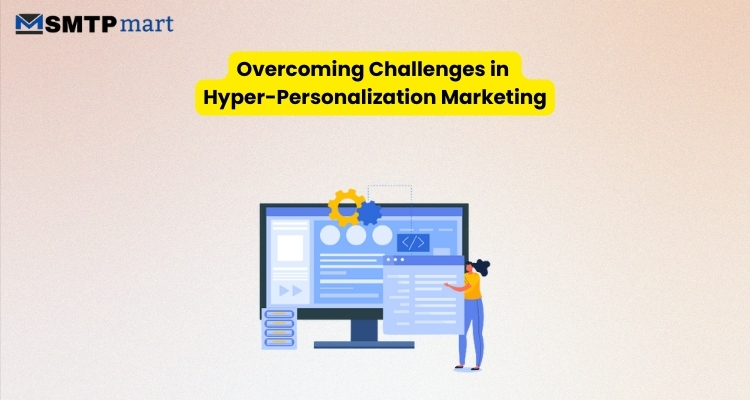
1. Data Privacy Concerns
Customers enjoy personalized experiences, but they also worry about how their data is used. Many people are afraid that companies might misuse their information. To build trust, businesses must follow data protection laws like GDPR (General Data Protection Regulation) and CCPA (California Consumer Privacy Act). Being honest about how data is collected and used is important. Brands should also give customers control over their information, such as allowing them to opt in or out of data sharing.
2. Technology Integration
Hyper-personalization requires advanced tools like Artificial Intelligence (AI) and data analytics. However, many companies find it difficult to integrate these tools with their existing systems. If the technology is not properly connected, personalization efforts may fail. Businesses should invest in the right software and ensure their teams are trained to use it. Working with experts or technology partners can also help make the transition smoother.
3. Avoiding Over-Personalization
While customers appreciate personalized experiences, too much personalization can feel uncomfortable. For example, if a brand knows too many details about a customer’s habits, it may seem intrusive. Finding the right balance is key. Businesses should personalize experiences in a way that feels helpful, not overwhelming. Transparency is also important—letting customers know why they are seeing certain recommendations or ads can make them feel more comfortable.
The Future of Hyper-Personalization
Hyper-personalization is becoming more advanced with new technologies. Businesses are using smart tools to create better customer experiences. Here’s how:
1. AI-Powered Voice Assistants
- Smart assistants like Alexa, Siri, and Google Assistant provide personalized recommendations.
- They learn from user habits and suggest relevant products, music, or services.
- Customers get a smoother and more convenient shopping experience.
2. Augmented Reality (AR) & Virtual Reality (VR)
- AR lets customers try products (like clothes, glasses, or makeup) before buying.
- VR creates a virtual store experience, making online shopping feel real.
- These technologies boost customer confidence and reduce returns.
3. Predictive Analytics for Proactive Engagement
- Businesses use past customer data to predict future needs.
- For example, if someone buys coffee every morning, they may receive a discount before their next purchase.
- This makes customers feel valued and improves brand loyalty.
4. Staying Ahead with Technology
- As Hyper-Personalization evolves, businesses must adapt to meet customer expectations.
- Companies that use AI, AR, VR, and predictive analytics will stand out from the competition.
- The goal is to make every customer experience feel personal, easy, and enjoyable.
Conclusion
Hyper-personalization is the future of marketing. It helps businesses connect with customers in a deeper and more meaningful way. By using AI, real-time data, and smart technology, companies can offer personalized experiences that make people feel special. When customers feel understood, they engage more, stay loyal, and trust the brand.
However, businesses must be careful. Too much personalization can feel intrusive, and data privacy is important. Companies should be honest about how they use customer information and focus on creating helpful, not overwhelming, experiences.
As technology improves, brands that embrace Hyper-Personalization will stay ahead of the competition. They will build strong relationships, increase sales, and create happier customers. The key is to treat each customer as an individual, just like a friendly shopkeeper who remembers their favorite things. Businesses that get this right will see long-term success.
Faqs
1. What is hyper-personalization?
Hyper-personalization uses data like user behavior, preferences, and real-time activity to send highly targeted and relevant messages.
2. How is it different from regular personalization?
Regular personalization might just use a name. Hyper-personalization goes deeper, using data to tailor each message to the user’s specific interests.
3. Why is hyper-personalization important?
It boosts engagement, improves customer experience, and increases conversions by making emails more relevant.
4. What kind of data is used?
Data includes browsing history, past purchases, location, email activity, and device used.
5. How can businesses use it?
By collecting customer data, using AI tools, and sending dynamic emails that adjust to each user’s actions.
6. What are the benefits?
Higher open and click rates, better customer relationships, and increased sales.
7. Are there any risks?
Yes, overdoing it can feel intrusive. Also, data privacy and compliance (like GDPR) are important.
8. Can all businesses use it?
Yes! From e-commerce to healthcare, any industry can benefit from hyper-personalized email campaigns.
